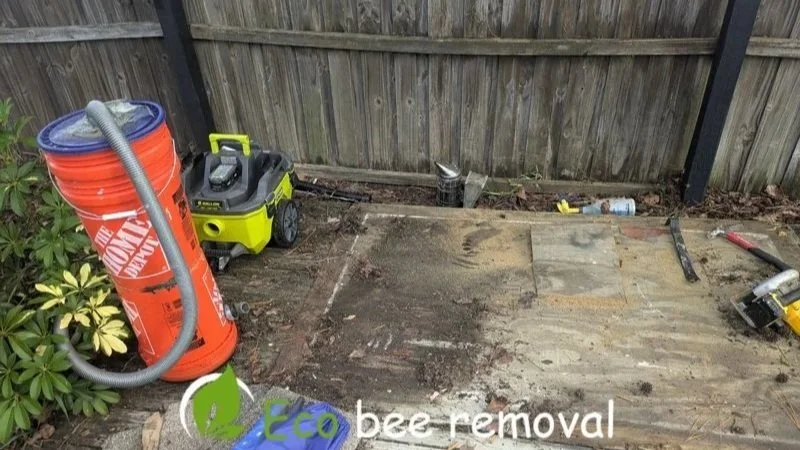Bees in a Shed Floor: Why It Happens and How to Safely Remove Them.
Live bee removal under a shed floor in Florida using eco-friendly methods.
If you’ve ever heard a steady buzzing sound coming from under your shed floor, you might be hosting more than just stored garden tools — you could have a bee colony living beneath the boards. Bees nesting in shed floors are more common than most homeowners realize, especially in Florida and other warm climates. While bees are vital pollinators, a hive under your shed can pose safety risks and structural problems if left unchecked.
In this article, we’ll explore why bees choose shed floors, how to identify hidden hives, and the safest, eco-friendliest way to remove them without harming the colony — or your property.
Why Bees Choose Shed Floors as Nesting Sites
Bees are incredibly resourceful creatures. When searching for a new home, they look for enclosed, dry, and undisturbed areas. Shed floors offer exactly that — protection from weather and predators, along with easy access through cracks, gaps, or rotting wood.
Here are the top reasons bees settle under shed floors:
Shelter and safety: The underside of a shed provides shade, warmth, and minimal disturbance — perfect for colony building.
Proximity to flowers: Sheds are often located near gardens, meaning easy access to nectar and pollen sources.
Wooden structures: Bees are attracted to wood cavities or gaps between floorboards. Over time, moisture damage can create openings ideal for nesting.
Neglected spaces: Since most people rarely inspect the underside of sheds, bees can thrive unnoticed for months.
Once bees find a small gap, scout bees communicate the location to the colony, and the swarm quickly establishes a hive — sometimes within hours.
How to Identify Bees in Your Shed Floor
Early detection is key to preventing damage and keeping the colony under control. Look for these telltale signs of a bee infestation beneath your shed:
1. Continuous Buzzing Sounds
If you hear a low, humming buzz coming from under your shed or along the floorboards, bees may be actively working inside.
2. Bee Traffic Near the Base
Watch for bees flying in and out from the same small hole or crack near the shed foundation or floorboards. That’s usually the main entrance to the hive.
3. Sawdust or Wax Residue
You may notice small bits of wax, honeycomb flakes, or sawdust-like material around the entry point — a sign bees are expanding their nest.
4. Unusual Warmth or Soft Spots in the Floor
Established hives can generate significant heat. If one section of your shed floor feels warmer, or the wood feels soft, the hive may be directly beneath it.
5. Sweet Smell or Honey Leakage
Over time, honey can drip through cracks in the floorboards, attracting ants or other insects. This can also lead to rot if left unattended.
Why You Shouldn’t Spray or Kill the Bees
It might be tempting to grab a can of insect spray and “take care of it,” but that’s the worst possible approach — both for you and the environment.
Here’s why:
Spraying can drive bees deeper into the structure, making removal harder.
Toxic chemicals can soak into your shed floor and the surrounding soil.
Dead bees leave honeycomb behind, which can attract pests like ants, cockroaches, and even rodents.
Most importantly, bees are protected pollinators — they play a vital role in our ecosystem and agriculture.
Instead of harming the colony, the best approach is live bee removal — a humane, eco-friendly process that safely relocates the bees to an apiary or natural habitat.
The Eco-Friendly Way: Live Bee Removal
At Eco Bee Removal, we specialize in live bee relocation, ensuring that the bees are safely transferred to a beekeeper who can care for them.
Here’s how a professional removal usually works:
1. Inspection
A bee removal expert examines the shed to locate the exact hive position using specialized tools, such as thermal cameras or sound detection devices.
2. Safe Access
The team carefully removes a section of the floor to reach the hive without damaging the structure more than necessary.
3. Live Extraction
Using gentle suction and specialized equipment, bees are safely collected and placed into a transport hive box.
4. Hive Removal and Cleanup
All honeycomb, wax, and residue are removed to prevent future infestations. The area is cleaned and sanitized to eliminate odors that attract new swarms.
5. Repair and Prevention
After removal, the professional will seal any cracks, gaps, or holes in the shed to ensure bees don’t return.
This process is completely chemical-free, protecting both your property and the bees.
How to Prevent Bees from Nesting in Shed Floors
Once the bees are removed, take preventive steps to ensure they don’t come back. Here’s what you can do:
Seal all cracks and gaps around the base and floorboards with wood filler or caulk.
Use fine mesh or wire screening on any ventilation openings.
Keep the area clean — remove debris, leaves, and old lumber near the shed.
Inspect annually, especially during spring and early summer when bees swarm most actively.
Paint or treat wood surfaces to reduce scent traces of past colonies.
These preventive actions can save you from future headaches and expensive repairs.
Fun Fact: Bees Prefer Recycled Homes
Bees are known for returning to old nesting sites. If a colony once lived in your shed or nearby, scout bees may return to check it out every year. That’s why proper cleanup and sealing after removal are so important — even the faint scent of old honeycomb can attract a new swarm.
When to Call a Professional
If you suspect bees are nesting in your shed floor, don’t wait until they spread further. A colony can grow from a few hundred bees to tens of thousands within weeks.
Call a licensed live bee removal expert who understands both the biology of bees and the safety requirements for removal.
At Eco Bee Removal, we provide fast, humane, and fully insured bee removal services across Florida. Whether bees are in your wall, attic, or shed floor, our team uses eco-friendly techniques to relocate them safely.
✅ Live bee relocation
✅ Chemical-free removal
✅ Structural repair and prevention
✅ Guaranteed results
📞 Call us today at (888) 282-1886 or visit 🌎 www.ecobeeremoval.com to schedule an inspection.
Final Thoughts
Having bees under your shed floor isn’t just a nuisance — it’s a reminder of how nature adapts to human spaces. While bees are essential to our planet, their nests in unwanted places can lead to structural damage and safety risks.
By choosing eco-friendly bee removal, you’re not only protecting your property — you’re also helping sustain Florida’s pollinator population.
Let’s work together to save the bees and keep your home safe. 🌼🐝

